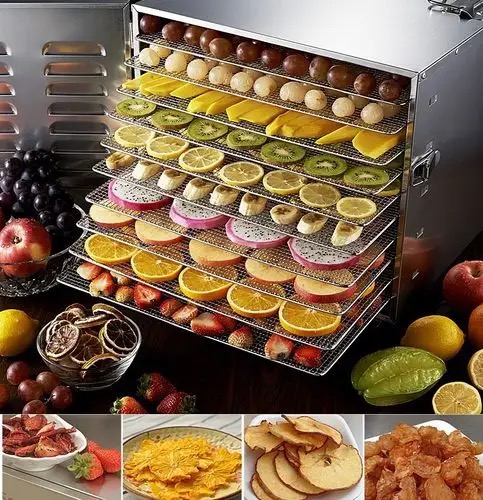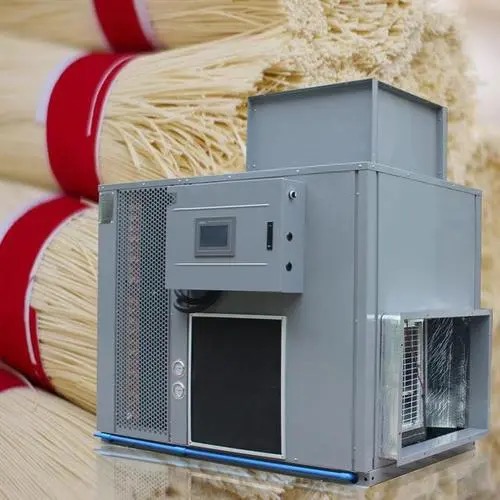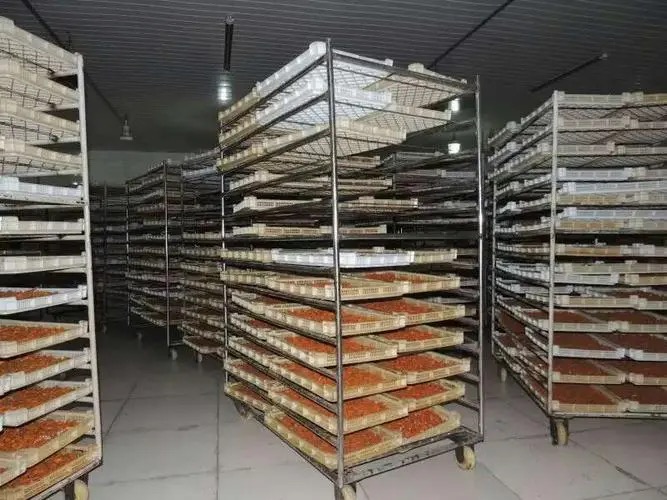
Content Menu
● Understanding Food Drying
>> Heat Pump Dryers
>> Vented Dryers
● Key Considerations When Choosing a Dryer
>> 1. Energy Efficiency
>> 2. Drying Quality
>> 3. Initial Investment vs. Long-Term Costs
>> 4. Space and Installation Requirements
>> 5. Product Type
● Advantages of Heat Pump Dryers
● Advantages of Vented Dryers
● Additional Considerations
>> Maintenance and Longevity
>> Noise Levels
>> Cost of Operation
>> Scalability
● Conclusion
● Frequently Asked Questions
>> 1. What is the main difference between heat pump and vented dryers?
>> 2. Which dryer is more energy-efficient?
>> 3. Can I use a heat pump dryer for all types of food?
>> 4. What are the maintenance requirements for these dryers?
>> 5. How do I determine the right dryer for my business?
When it comes to food drying, the choice of equipment can significantly impact the quality, efficiency, and cost-effectiveness of the process. As a manufacturer of food drying machines in China, we understand the importance of selecting the right type of dryer for your specific needs. In this article, we will explore the differences between heat pump dryers and vented dryers, focusing on their applications in food drying, and provide insights to help you make an informed decision.
Understanding Food Drying
Food drying is a preservation method that removes moisture from food, inhibiting the growth of bacteria, yeasts, and molds. This process not only extends the shelf life of food but also concentrates flavors and nutrients. There are various methods of food drying, including air drying, sun drying, and using specialized drying equipment. Among these, heat pump and vented dryers are two popular options.

Heat Pump Dryers
Heat pump dryers utilize a refrigeration cycle to remove moisture from food. They work by drawing in air, heating it, and then circulating it through the food. The moisture-laden air is then condensed, and the water is removed, allowing for continuous drying. Here are some key features of heat pump dryers:
1. Energy Efficiency: Heat pump dryers are known for their energy efficiency. They use less energy compared to traditional dryers because they recycle heat within the system.
2. Gentle Drying: The low-temperature drying process is gentle on food, preserving its texture, color, and nutritional value.
3. Versatility: Heat pump dryers can be used for a wide range of food products, including fruits, vegetables, herbs, and meats.
Vented Dryers
Vented dryers, on the other hand, operate by drawing in air from the environment, heating it, and then blowing it through the food. The moisture is expelled outside through a vent. Here are some characteristics of vented dryers:
1. Faster Drying Times: Vented dryers typically have faster drying times due to the higher temperatures used in the drying process.
2. Lower Initial Cost: Generally, vented dryers are less expensive to purchase than heat pump dryers.
3. Limited Control: Vented dryers may not offer the same level of control over temperature and humidity, which can affect the quality of the dried food.

Key Considerations When Choosing a Dryer
When selecting between a heat pump dryer and a vented dryer for food drying, several factors should be considered:
1. Energy Efficiency
Energy consumption is a critical factor, especially for businesses looking to minimize operational costs. Heat pump dryers are more energy-efficient, making them a better choice for long-term savings. They can reduce energy costs significantly, which is particularly beneficial for large-scale operations where drying is a continuous process.
2. Drying Quality
The quality of the dried food is paramount. Heat pump dryers provide a more controlled environment, which helps maintain the food's nutritional value and flavor. The lower temperatures used in heat pump drying prevent the degradation of sensitive nutrients, making them ideal for fruits and vegetables. Vented dryers, while faster, may lead to a loss of quality due to higher temperatures, which can cause over-drying and loss of essential oils and flavors.
3. Initial Investment vs. Long-Term Costs
While vented dryers may have a lower initial purchase price, heat pump dryers can save money in the long run due to their energy efficiency. It’s essential to consider the total cost of ownership, including maintenance and energy costs, when making your decision. For businesses that plan to operate continuously, the investment in a heat pump dryer can pay off quickly.
4. Space and Installation Requirements
Vented dryers require proper ventilation, which may limit where they can be installed. They need to be placed near an external wall to allow for venting, which can be a significant drawback in some facilities. Heat pump dryers, being more compact and self-contained, can be installed in various locations without the need for external venting, making them more versatile for different setups.
5. Product Type
Different food products may require different drying methods. For delicate items like herbs and fruits, a heat pump dryer may be more suitable due to its gentle drying process. For bulk drying of hard vegetables, a vented dryer might be adequate. Understanding the specific requirements of the food you intend to dry is crucial in making the right choice.
Advantages of Heat Pump Dryers
1. Preservation of Nutrients: The lower drying temperatures help retain vitamins and minerals in the food, making heat pump dryers an excellent choice for health-conscious consumers.
2. Reduced Risk of Over-Drying: The controlled environment minimizes the risk of over-drying, which can lead to loss of flavor and texture. This is particularly important for high-value products where quality is paramount.
3. Environmentally Friendly: Heat pump dryers have a lower carbon footprint due to their energy efficiency. They are a sustainable choice for businesses looking to reduce their environmental impact.
Advantages of Vented Dryers
1. Speed: Vented dryers can dry food faster, which may be beneficial for businesses with high turnover. The quick drying process can help meet demand without sacrificing quality.
2. Simplicity: They are generally easier to operate and maintain, making them suitable for smaller operations. The straightforward design of vented dryers can be appealing for businesses that require minimal complexity in their operations.
Additional Considerations
Maintenance and Longevity
Both types of dryers require maintenance, but the nature of that maintenance can differ. Heat pump dryers may require more specialized servicing due to their complex systems, while vented dryers typically need regular cleaning of vents to prevent blockages. Understanding the maintenance requirements can help you choose a dryer that fits your operational capabilities.
Noise Levels
Noise can be a factor in choosing a dryer, especially in environments where a quiet operation is preferred. Heat pump dryers tend to operate more quietly than vented dryers, which can be beneficial in settings like restaurants or small food processing facilities.
Cost of Operation
In addition to the initial purchase price, consider the operational costs associated with each type of dryer. Heat pump dryers, while more expensive upfront, can lead to lower energy bills and reduced labor costs due to their efficiency. Vented dryers may have lower initial costs but can incur higher energy expenses over time.
Scalability
If you anticipate growth in your business, consider how each type of dryer can scale with your operations. Heat pump dryers can often handle larger volumes of food without compromising quality, making them a better long-term investment for growing businesses.
Conclusion
Choosing between a heat pump dryer and a vented dryer for food drying depends on various factors, including energy efficiency, drying quality, initial investment, space requirements, and the type of food being dried. As a manufacturer of food drying machines, we recommend considering your specific needs and operational goals before making a decision.

Frequently Asked Questions
1. What is the main difference between heat pump and vented dryers?
Heat pump dryers recycle heat and operate at lower temperatures, while vented dryers expel moisture outside and typically operate at higher temperatures.
2. Which dryer is more energy-efficient?
Heat pump dryers are generally more energy-efficient than vented dryers.
3. Can I use a heat pump dryer for all types of food?
Yes, heat pump dryers are versatile and can be used for a wide range of food products.
4. What are the maintenance requirements for these dryers?
Heat pump dryers require regular cleaning of filters and occasional servicing, while vented dryers need vent cleaning to prevent blockages.
5. How do I determine the right dryer for my business?
Consider factors such as the type of food you will be drying, your budget, energy costs, and available space for installation.












